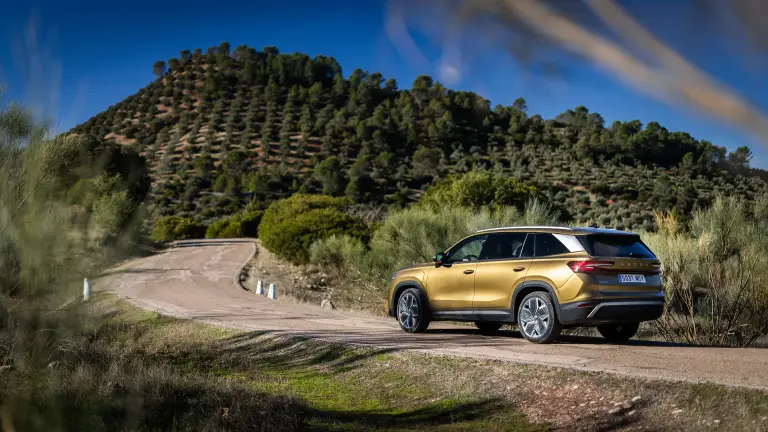Over a period of around eight months, 23 students aged 17 to 20 years worked on the ŠKODA SUNROQ. The students from seven different fields of study were supported in their work by their teachers at the school and by experts from the ŠKODA Technical Development, Design, and Production departments.
To find a name for the vehicle, the students invited ŠKODA customers and fans to submit suggestions via social media channels. The name SUNROQ was finally chosen from several hundred proposals. The author of the winning submission was invited to the SUNROQ’s official press presentation, where he met the students and was even given the chance to take the SUNROQ for a spin.
“It’s a great feeling to be able to present the SUNROQ to the public,” says Michal Bydžovský, one of the 23 participating vocational students “The last eight months have been a great challenge for the entire team, but I think we have done a great job.”
Carsten Brandes, Head of ŠKODA Academy adds: “The result of this project demonstrates the quality of the professional training that the students receive at the ŠKODA Vocational School. You can clearly see the competence of our students and how much passion has gone into producing the SUNROQ.”
The first steps involved reinforcing the body of the ŠKODA SUNROQ and removing the fixed roof. This required modifying all four doors and redesigning the tailgate from scratch. Compared to the luggage compartment volume of 521 litres in the production model ŠKODA KAROQ, the ŠKODA SUNROQ actually boasts an even larger boot. In addition, the team developed new door trims, adjusted the A-pillars and completely removed the B-pillars, which also required rerouting the seatbelts directly through the front seats. Modified front and rear bumpers complete the alterations to the car’s body. The 2,638-millimetre wheelbase remained unchanged, as did the vehicle’s length at 4,382 millimetres and its width of 1,811 millimetres. The SUNROQ stands at 1,480 millimetres tall.
The Velvet-red paint finish gives the ŠKODA SUNROQ a confident look, while the interior with its white and red leather upholstery perfectly matches the car’s cabriolet personality, creating a harmonious overall colour scheme. The students paid great attention to small details, focusing primarily on the subject of light. LEDs provide backlighting for the door handles and wheel arches. Projectors in the front and rear bumpers and all doors project a discreet ŠKODA logo onto the tarmac; when opening the boot, a logo also appears when opening the luggage compartment door.
The ŠKODA SUNROQ is powered by a 1.5 TSI four-cylinder engine. Thanks to modifications to the engine control, the petrol direct injection engine now provides 120 kW (163 hp), max torque of 279 Nm. This enables the SUNROQ to reach a top speed of 195 km/h and to accelerate from 0 to 100 km/h in 8.6 seconds. To ensure sporty looks, the concept car features 20-inch VEGA alloy wheels. The shock absorbers from the ŠKODA OCTAVIA RS are lowering the body by 50 millimetres. The modified exhaust system produces a sportier engine sound.
Since 2014, students at the ŠKODA Vocational School in Mladá Boleslav, which was founded in 1927 and currently has over 900 registered day students, have produced one concept car a year. First came a two-seater ŠKODA CITIGO; this was followed in 2015 by a ŠKODA FABIA pick-up, a ŠKODA RAPID SPACEBACK coupé in 2016, and a ŠKODA CITIGO electric buggy in 2017.




























